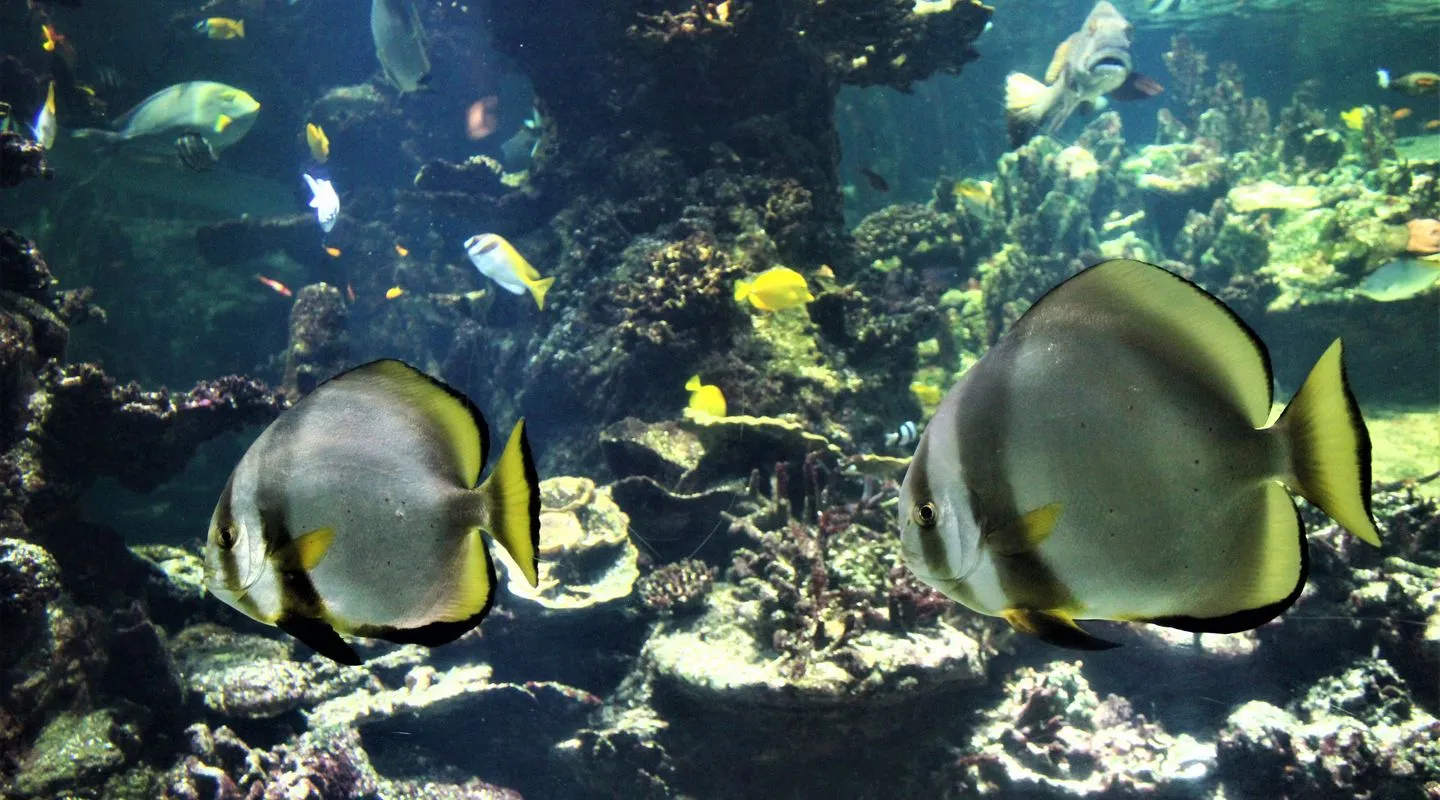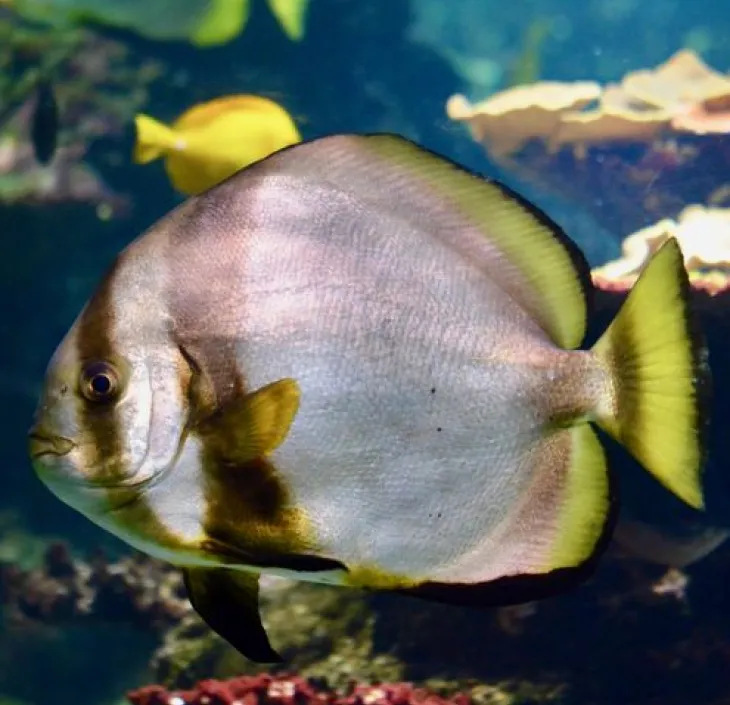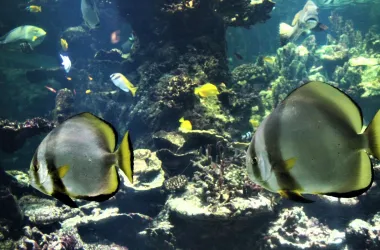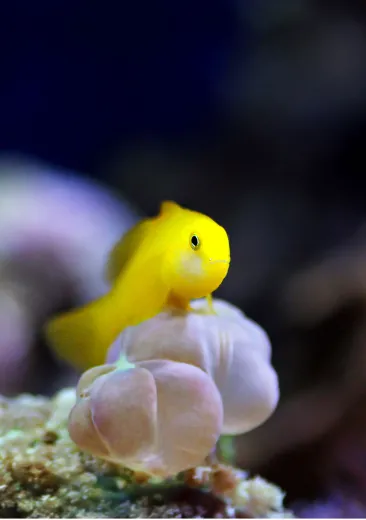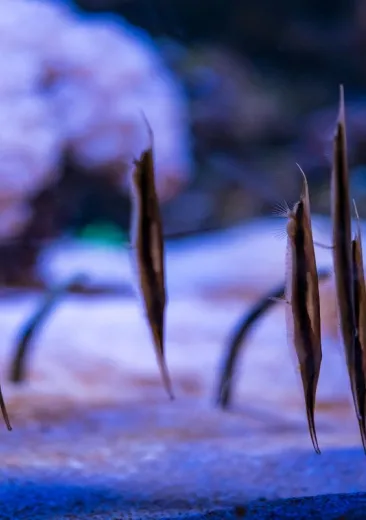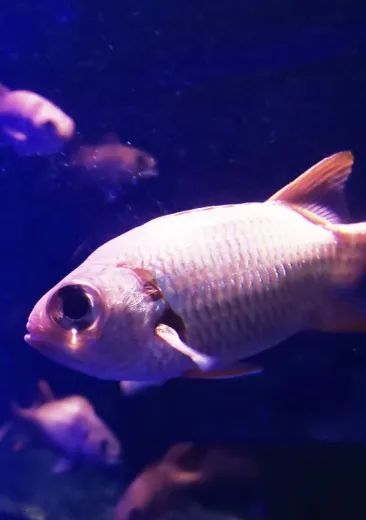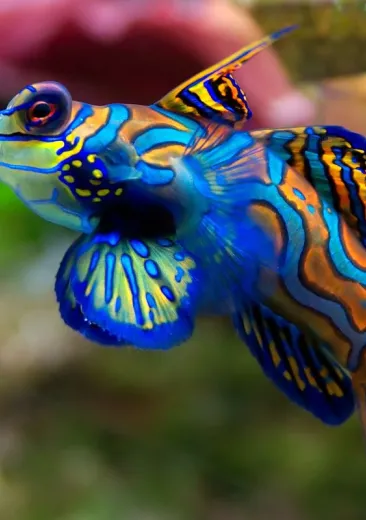...even if they are not the centre of attention!
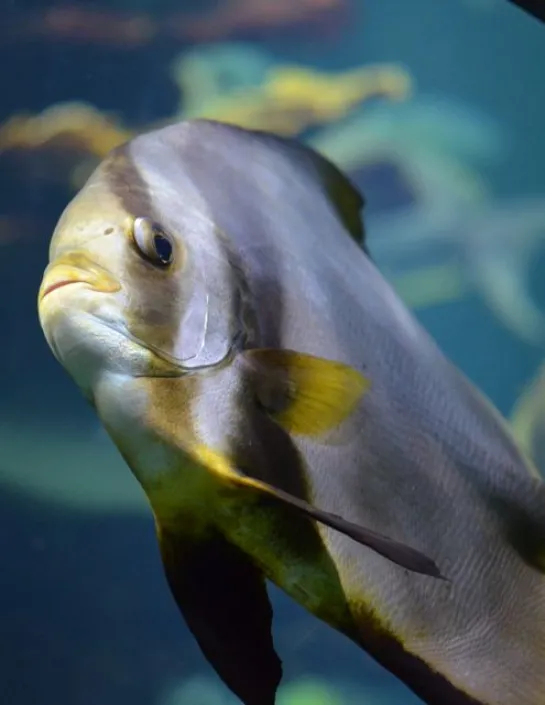
Identity card
Orbiculate Batfish
- Scientific name:
- Platax orbicularis
- Family:
- Ephippidae
- Class:
- Actinopterygii
- Phylum:
- Chordata
- Year of description:
- Forsskål, 1775
- IUCN Status:
- Least Concern
- Distribution:
-
Red Sea, Indian and Pacific Oceans, French Polynesia (Tuamotu Archipelago), southern Japan, Australia and New Caledonia.
- Habitat:
-
Coral reefs, lagoons, at depths of between 5 and 35 metres.
- Size:
It measures 50 cm on average but can reach 60 cm. This species is oviparous.
- Diet:
-
Algae, invertebrates and small fish.
